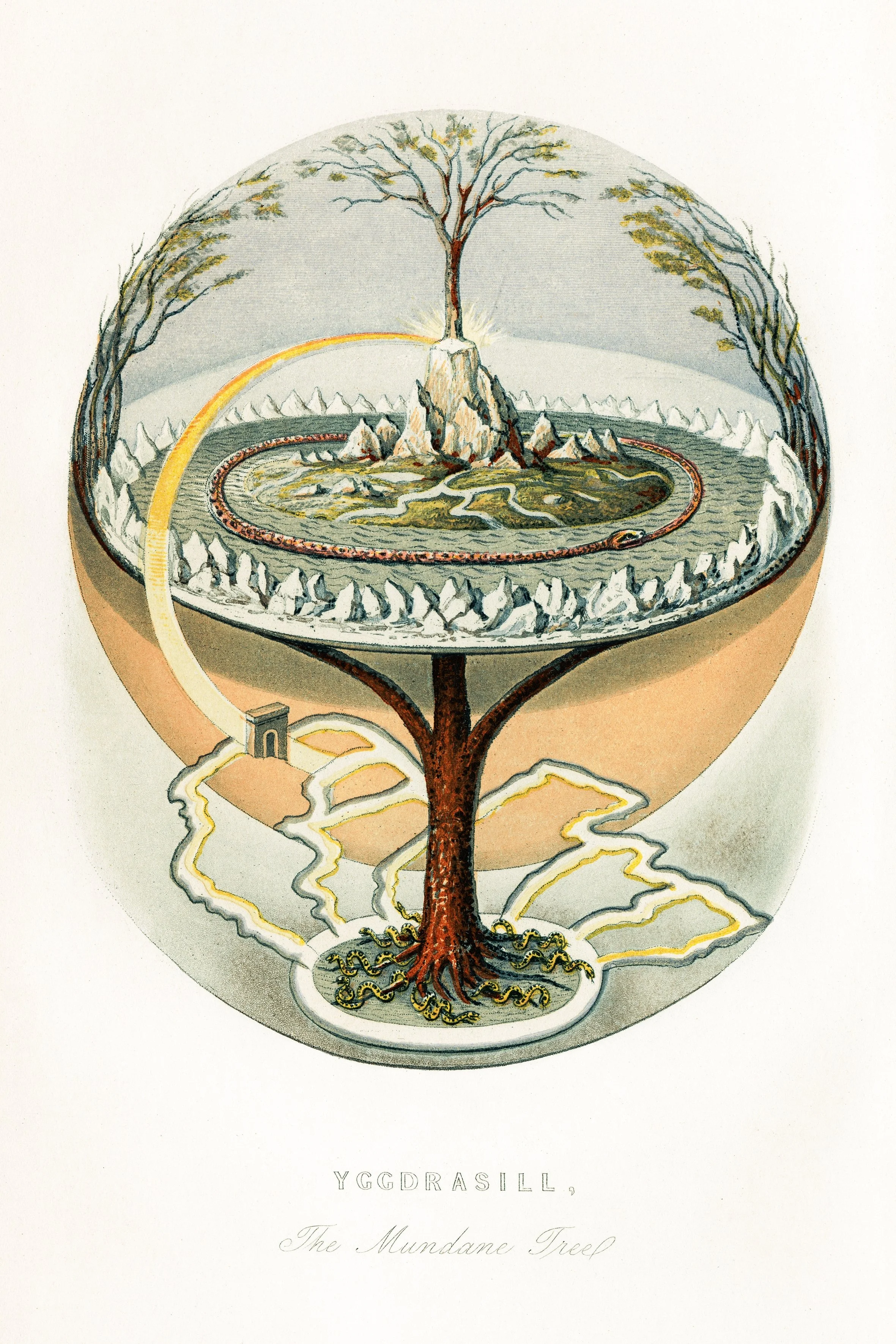Real trees, not robot trees
By Robin Koenig
“Robot trees” sound like something you’d find in a Philip K Dick or William Gibson novel, a way of highlighting the absurdity of some high tech futuristic setting, and how it has been completely cut off from nature. Indeed, this idea is also used for comedic effect in an episode of The Simpsons set in the future, where there is a visual gag about holographic trees that are “in memory of a real tree.”[1]
The robot trees in the city of Cork, Ireland, are, however, very real. Purchased in 2021 at the cost of €450,000 and with a yearly cost of maintenance above €17,000 [2], they look like four metre tall beehives. [3] Designed by German company Green City Solutions, they basically operate as giant containers for moss that will allegedly filter dirty city air and emit clean air, thus lessening air pollution. [4] On the Green City Solutions website, they say they “rely on the natural abilities of mosses and combine them with smart technology” and that “this is complex and not always easy to understand.”[5]
Despite the technology's apparent complexity, Cork's political establishment was full-throated in its support. Green Party councillor Dan Boyle said he “welcomed the new infrastructure”[6] and Cork City Council’s operations director, David Joyce, complained that critics of the robot trees were “taking the initiative out of context.”[7]
Critics of the scheme include academics like atmospheric scientist Dean Venables, who works at the Centre for Research into Atmospheric Chemistry at UCC. To quote Venables: “I don't like these trees because they are trying to remove pollutants and that's not going to be an effective approach.” He continued, “In terms of air quality what we really have to do is remove pollution at its source."[8]
But Venables wasn't the only one. Wexford County Council also had no interest in the glorified moss-filled sheds, with their senior scientist, Brendan Cooney, stating that he had “no interest” and that local authorities need to “solve the problem at source” instead of investing in such projects. [9]
Cooney and Venables have both hit upon some of the main issues with much of the “green tech” that is breathlessly sold to us as the quick fix to the ecological crisis. Namely, regardless of its effectiveness at solving this or that problem (in the robot trees case, lessening air pollution, though their efficacy at that task is by no means clear)[10], they fail to deal with the source of the issue.
In this case, the issue is air pollution. What causes air pollution? On the city level, one of the key sources is cars. [11] It follows, then, that among the most effective ways of combating air pollution in our cities is by reducing car use. You can do this in many ways, by making cities friendlier to pedestrians and cyclists, and providing a fast, frequent and free public transport system. This would both lead to a decrease in urban air pollution, while also generally making our cities more pleasant places to live.
But the issue of the robot trees goes beyond the fact that they are expensive eyesores that probably don’t even do anything.[12] They are also actively damaging. Cork-based urban regeneration campaigner Jude Sherry has pointed out that the 5 “trees” installed on Cork’s streets use “the equivalent of up to a year’s worth of a household’s electricity” and that “their water use is colossal.”[13]
Sherry also criticised the fact that Cork City Council, at the same time they were installing at great expense the robot trees, were also removing trees from the city, highlighting the case of Bishop Lucey Park, which is located off the Grand Parade.[14] The council cut down a number of mature trees in the park to accommodate the sale of some of the park, which is public land, to the local Freemasons’ lodge. [15]
According to Sherry, “Cork city is currently over-paved…it’s a marshland, and the rain water needs to go into the soil. There needs to be a lot more spaces for water to get back into the ground instead of running off the concrete in the pavements. Prevention is better than cure.” [16]
“Oak trees, for example, can provide a place to live for up to 2,300 wildlife species. ”
Cork is in desperate need of more green spaces, generally, which are vital spaces for all kinds of life, including human life. Oak trees, for example, can provide a place to live for up to 2,300 wildlife species. [17] The only wildlife this author has seen interacting with Cork’s robot trees has been the seagulls defecating on them.
Back to Sherry, who draws attention to both the sick irony of the robot trees being “obviously made from dead trees” and the fact that the high amount of electronics the robot trees need to operate has a “massive impact across the supply chain, especially to do with the raw material extraction.” [18] Sherry is pointing out a flaw not only with Cork’s robot trees but with so much green tech. Even if the robot trees were guaranteed to be effective, what would it mean for them to proliferate to the extent that they were on every street corner of every city? How many trees would need to be cut down to provide building material? How many more must spend their lives toiling in toxic rare earth mines in Congo or China to make the electric components that keep them running?
Cork’s robot trees are emblematic of a wider issue. The capitalist class has become aware of the mounting negative externalities of its activity. They would like to limit these negative externalities as much as possible without having to change anything else. They turn to technological quick fixes, like “geoengineering”, which are tech-based interventions in the climate system at a massive scale. [19] These schemes include a number of far-fetched ideas, such as shooting aerosols into the stratosphere, inventing some way of removing and sequestering CO2, or perhaps the most laughable, making the clouds reflective.[20]
“We will not be saved by magical technologies that allow the ruling class to run society in exactly the same destructive way they always have...”
Like the robot trees, the usefulness of such technology in fighting climate change and other examples of environmental collapse is dubious at best. Unlike the robot trees, the consequences are unknown and potentially as catastrophic as the global warming they were meant to counteract.[21] They are the solutions of a class that is fundamentally wedded to things as they are, with a quasi-religious faith in the power of progress and technology to get them out of this current mess.
The ultimate solution is to fundamentally break from how we live now, to build a new ecosocialist world that, for example, is organised to produce less air pollution in the first place. We will not be saved by magical technologies that allow the ruling class to run society in exactly the same destructive way they always have, with robot trees and reflective clouds fixing up all the messes.
There is a better, more realistic way.[23] One that follows the planetary boundaries that the techno-optimists and snake oil salespeople ignore. Ecosocialism can lead to a better life for all of us, including cities with clean air and green spaces, full of real, living trees as our neighbours. Let's fight for that, and relegate the robot trees to science fiction.
Endnotes
[1] The Simpsons S6E19 "Lisa's Wedding", 19th March 1995
[2] Daire Fitton, “Calls to axe Cork's costly Robot Trees after council reviews 'inconclusive' report”, Cork Beo, 8 November 2023
[3] Eoghan Dalton, “Cork City Council defends 'robot trees' as it launches Clean Air Strategy”, The Journal, 12 August 2021 https://www.thejournal.ie/cork-city-trees-air-quality-5520586-Aug2021/
[4] Ibid.
[5] Green City Solutions, Frequently Asked Questions https://greencitysolutions.de/en/about-us/faqs/
[6] Jennie O'Sullivan, Cork City Council defends installation of 'robot trees', RTÉ, 10 August 2021 https://www.rte.ie/news/munster/2021/0810/1240084-citytrees-cork/
[7] Dalton, “Cork City Council defends 'robot trees'”
[8] O’Sullivan, “Cork City Council defends installation of “robot trees””
[9] Dalton, “Cork City Council defends 'robot trees'”
[10] Fitton, “Calls to axe Cork’s costly Robot Trees”
[11] The Irish Times, “The Irish Times view on pollution from cars”, 15 February 2023 https://www.irishtimes.com/opinion/editorials/2023/02/15/the-irish-times-view-on-pollution-from-cars/
[12] Fitton, “Calls to axe Cork’s costly Robot Trees”
[13] Eoin Kelleher, “Cork's ‘robot trees’ labelled a waste of energy by campaigner as council analyses impact”, The Echo, 3 May 2023.
[14] Ibid.
[15] Sara Rountree, “Part of Bishop Lucey Park to be sold to Cork Freemasons as council vote on disposal”, Cork Beo, 10 July 2023 https://www.corkbeo.ie/news/local-news/part-bishop-lucey-park-sold-27294734
[16] Kelleher, “Corks ‘robot trees’ labelled a waste of energy”
[17] Woodland Trust, Oak trees and wildlife, https://www.woodlandtrust.org.uk/trees-woods-and-wildlife/british-trees/oak-tree-wildlife/
[18] Kelleher, “Corks ‘robot trees’ labelled a waste of energy”
[19] Linda Schneider, “Geoengineering and Environmental Capitalism, Extractive Industries in the Era of Climate Change”, Science for the People, 21 August 2018.
[20] bid.
[21] Ibid.
[22] Ibid.
[23] Paul Murphy and Jess Spear, ‘The Necessity for Ecosocialist Degrowth’, Rupture Issue 7, Spring 2022.


